The Lauf TR Boost is an unusual carbon fibre fork that’s designed to provide 60mm of travel with the use of glass-fibre leaf springs. Lee Craigie has been testing one, and gives us a rundown of her experience with the Lauf Trail Racer fork.
The Marmite Fork
Most people cock their heads quizzically when they catch sight of a Lauf fork. Indeed Chipps experienced exactly that when he first tested the original Lauf Trail Racer 29 fork. On first sight, handsome is not a word that immediately springs to mind but the word intriguing does and this word hangs around when you start riding it too.
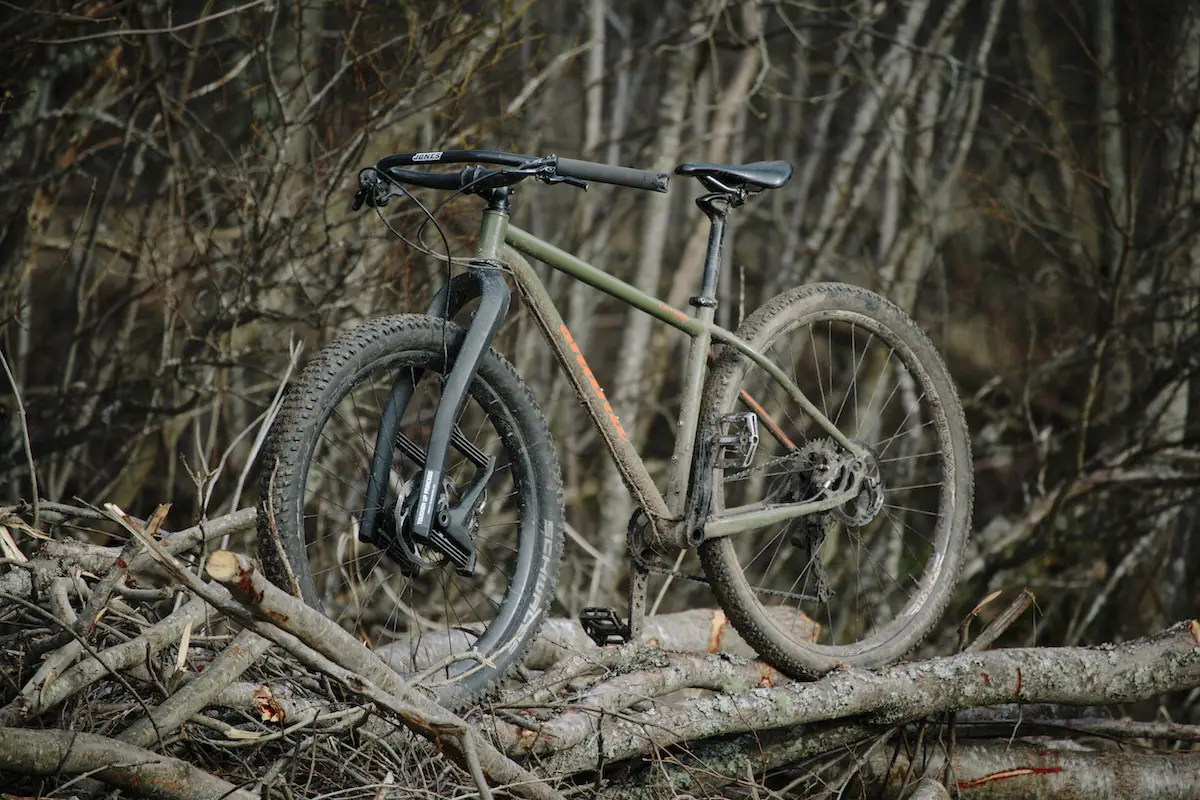
Lauf Trail Racer Fork Features
- Full carbon fibre construction
- 60mm travel
- S2 glass-fibre leaf springs
- Available in Regular (over 65kg) and Light (under 70kg)
- Designed for 29in and 27.5+ wheels (other versions available)
- Max tyre clearance: 29×2.8in, 27.5×3.0in
- 110x15mm (Boost) thru-axle (also available in a 100x15mm version)
- Minimum rotor size: 180mm
- 5-year warranty
- Claimed weight: 1040g
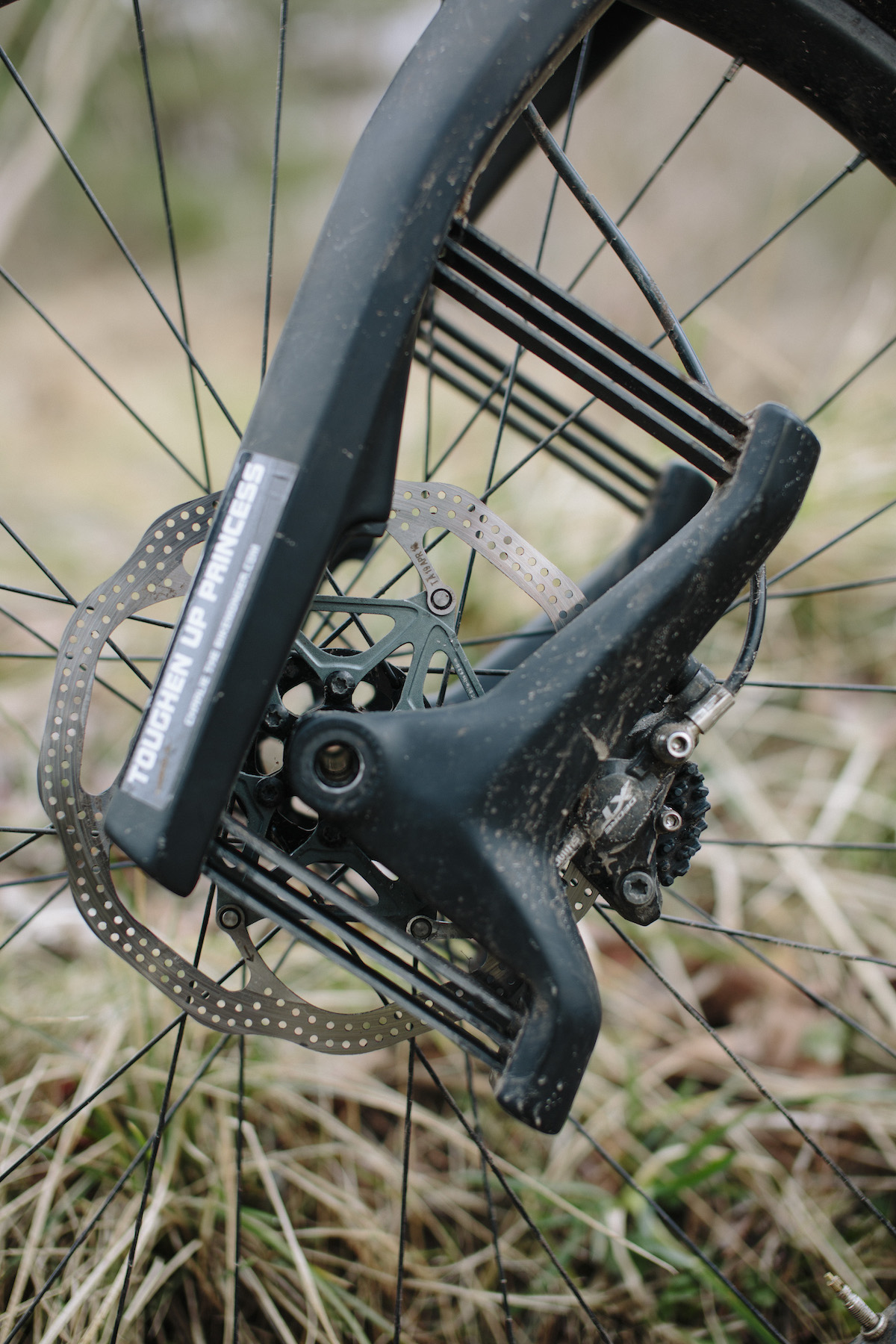
The mistake I made when I first fitted it to my bike, and pedalled off confidently towards my local trails, was that I expected it to perform like a suspension fork. It doesn’t. I wouldn’t go so far as to say it performs like a pogo stick but let’s keep that image hovering about for a bit. Let’s recap. So far we have “intriguing “and “pogo stick” but bear with me. It does get better.
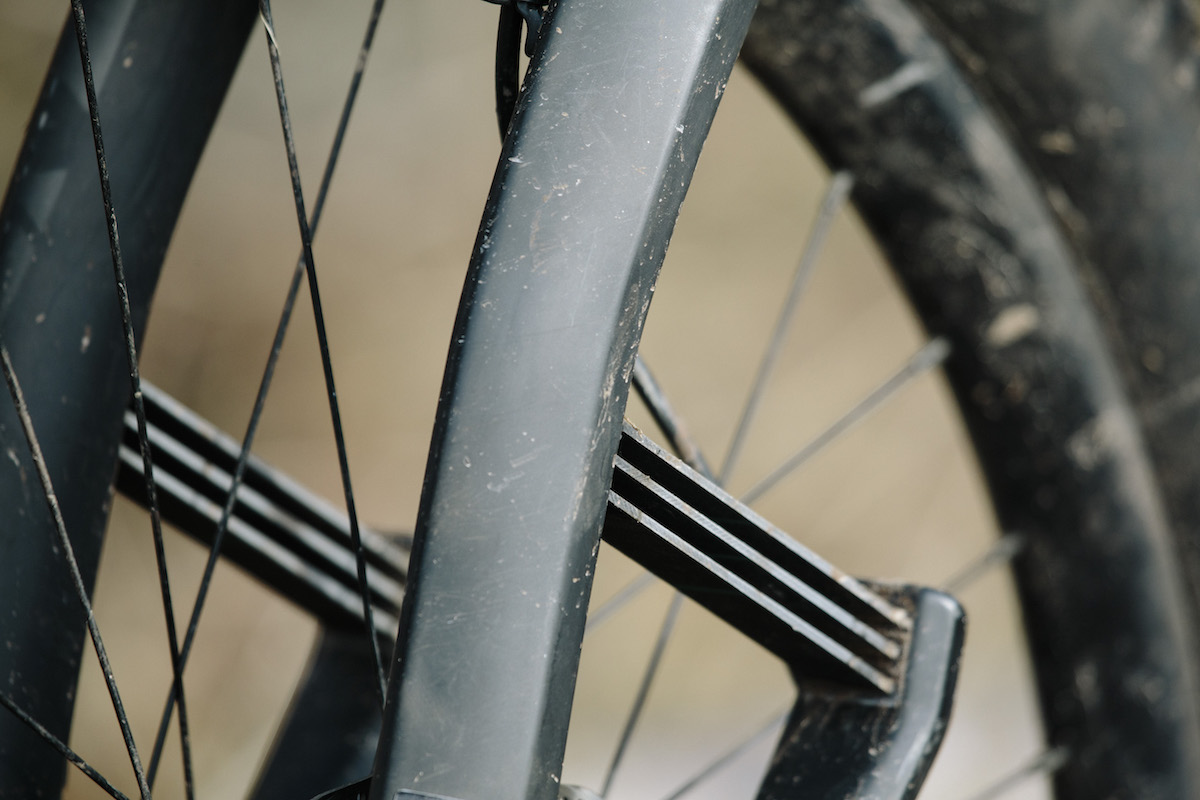
Out of the box, the Lauf Trail Racer is available in both ‘regular’ and ‘light’ versions. In essence, it’s a rigid carbon fork with the axle held in a separate carbon fibre unit, sprung by leaf springs that sit behind the main fork legs. The vertical action of the fork is governed by two sets of three glass fibre leaf springs, which connect the axle and rear struts to the carbon fibre fork legs. The thickness and makeup of these leaf springs is what determines how easy they are to flex. Our test fork is the regular spec, and it’s designed to suit riders above 65kg. If you’re lighter than that though, the ‘light’ version subs in a different set of composite leaf springs to offer more flex.

So why would you want such a unique design over a regular suspension fork? Well the Lauf design isn’t necessarily a replacement for a regular suspension fork, but rather an offering that sits between the tempting light weight of a carbon fibre rigid fork, and the trail-damping comfort of a suspension fork. Lauf claims that its fork design combines the best of all worlds. With no actual moving parts, it’s service-free and capable of operating in a much wider variety of conditions. For this reason, Lauf makes a fatbike version that’s designed to perform in sub-zero conditions in the snow. Because for anyone who’s ridden in such temperatures, you’ll know that the oil inside a traditional suspension fork damper can often turn into sticky honey, rendering the suspension largely unusable.
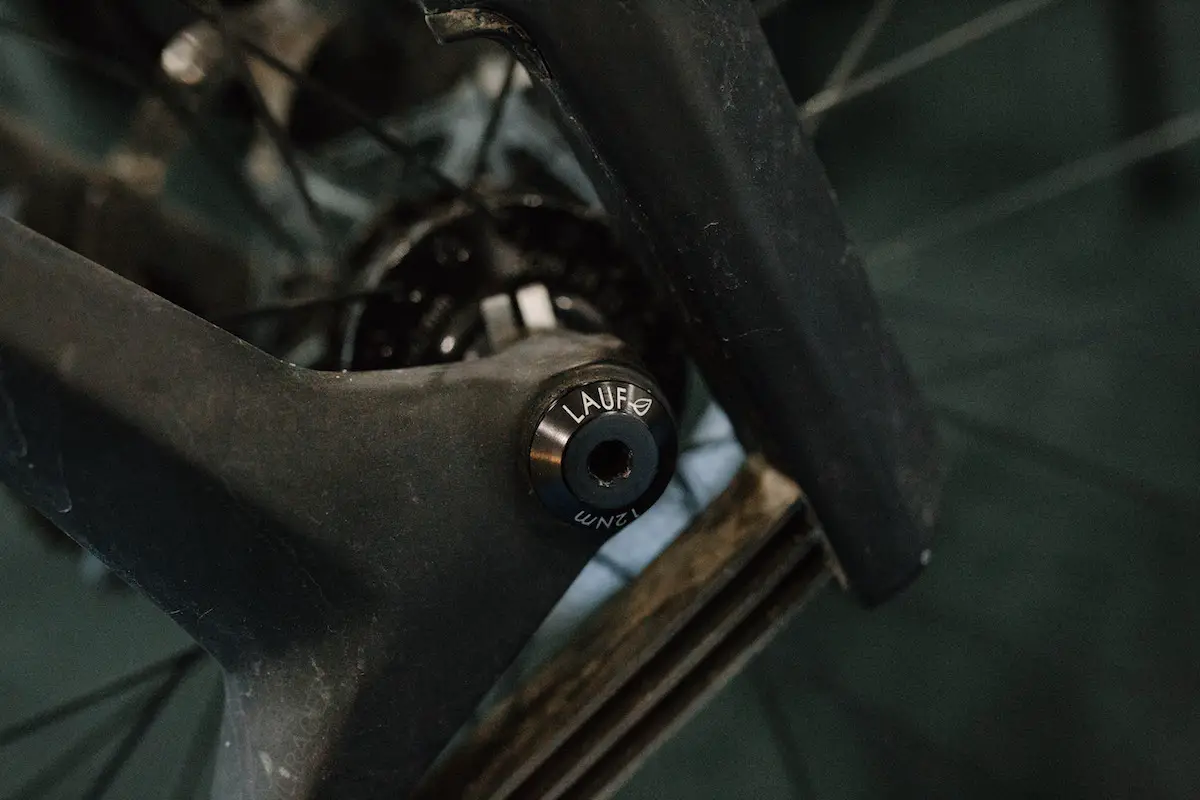
To test the Lauf Trail Racer fork, I fitted it onto a Shand steel hardtail – a fast and momentum-gathering mobile. I usually ride it built up with a very lightweight, rigid carbon fork because it makes the bike feel like a young stallion eager to break out of its stable. But set up this way, on anything rough and technical, the bike judders to a halt and digs its heels in. So I tried it with a 100mm suspension fork and, although it weighed down the front end a bit, I liked it.
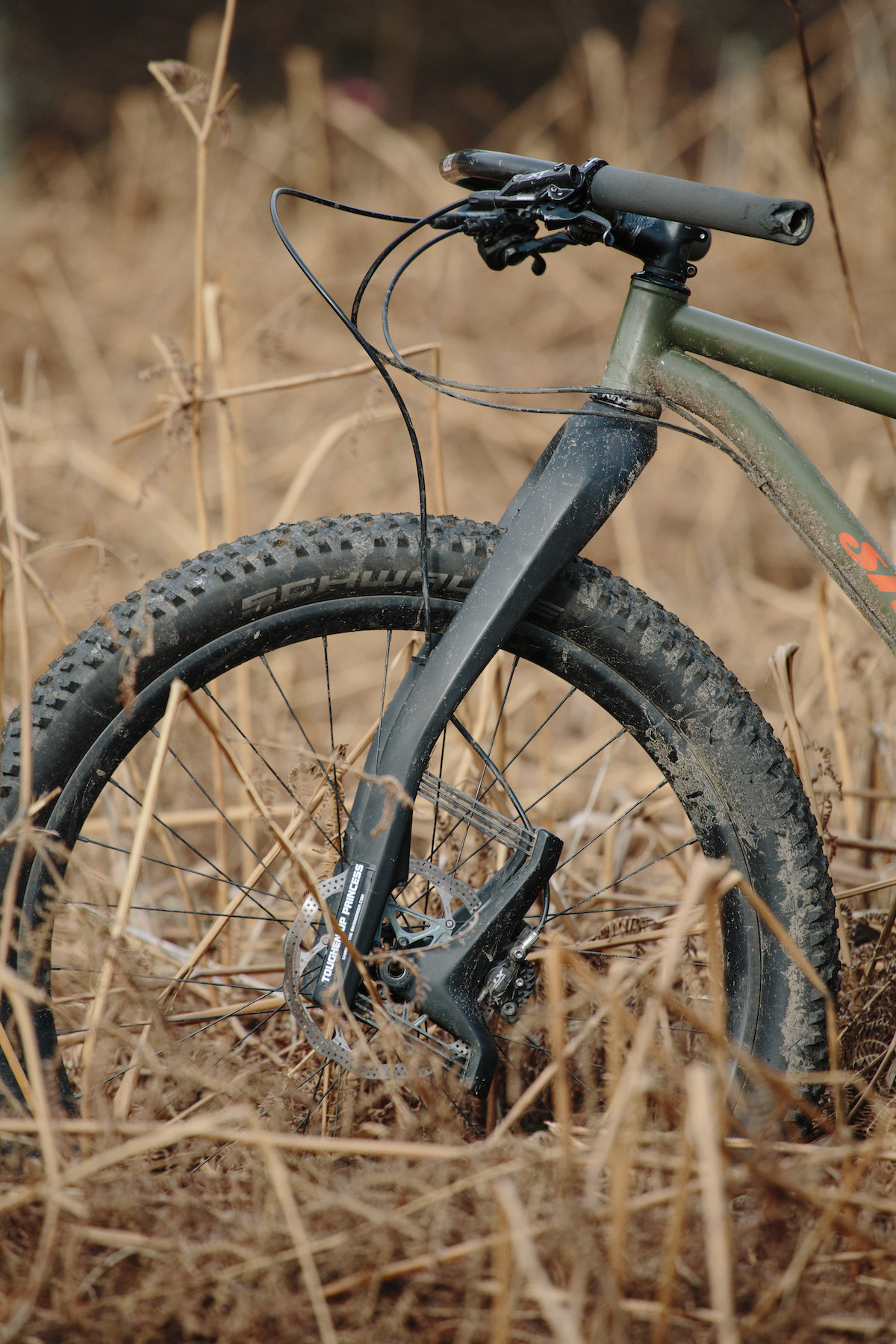
When I first fitted the Lauf Trail Racer (which boasts 60mm travel due to its weird looking glass fibre leaf springs), I had been riding my suspension fork a lot and hadn’t adjusted my expectations accordingly. But as soon as I did, a little chink of light started showing through the darkness. The bike sprang forward again with the lightness of touch I associated with the rigid fork but it had also stopped juddering on the rough stuff. (Let’s be clear here, when I say rough I don’t mean boulders and drops, I mean bobbles. It was brilliant on the bobbles.)

The Lauf fork had taken the buzz and chatter away from the ride completely whilst breathing new life into the handling. With my new expectations framing my experience I sailed off along familiar trails whooping and hollering like an excited child…then I forgot and started going big. My recommendation would be, don’t do that on this fork. Remember our ‘pogo stick’ from before? Well, despite a 15mm bolt through axle, add to that the flex a pole-vaulter might be familiar with and you start getting the idea. But knock it back a couple of notches, remind yourself of its limitations, adjust your mindset and stick to the bobbles and you cannot not be disappointed.
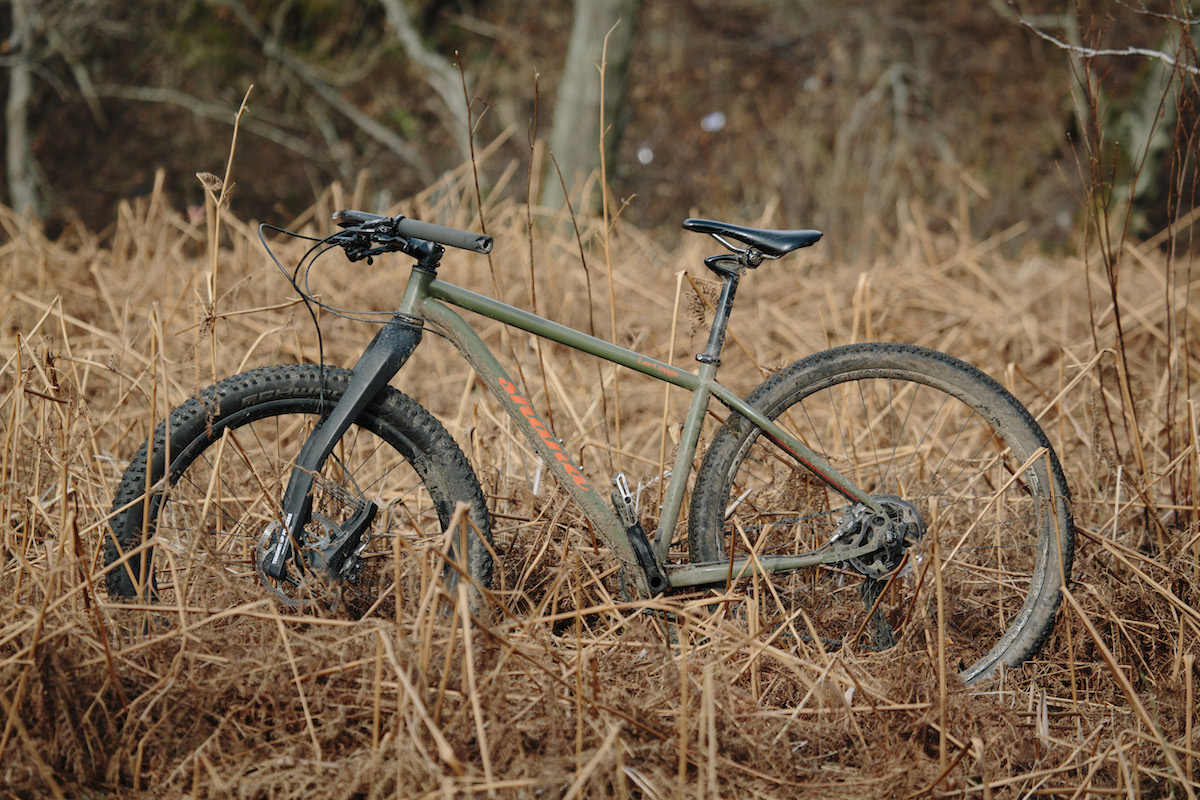
Overall
The Lauf Trail Racer Boost forks are unusual and incredibly eye-catching. They’re also very light, comfortable, and ideal for that middle ground between the control of a suspension fork, and the lightweight efficiency of a rigid carbon fork. I’m using one on the Tour Divide this year (3000 miles of bobbles). I suspect I’ll return very much in love – stay tuned.

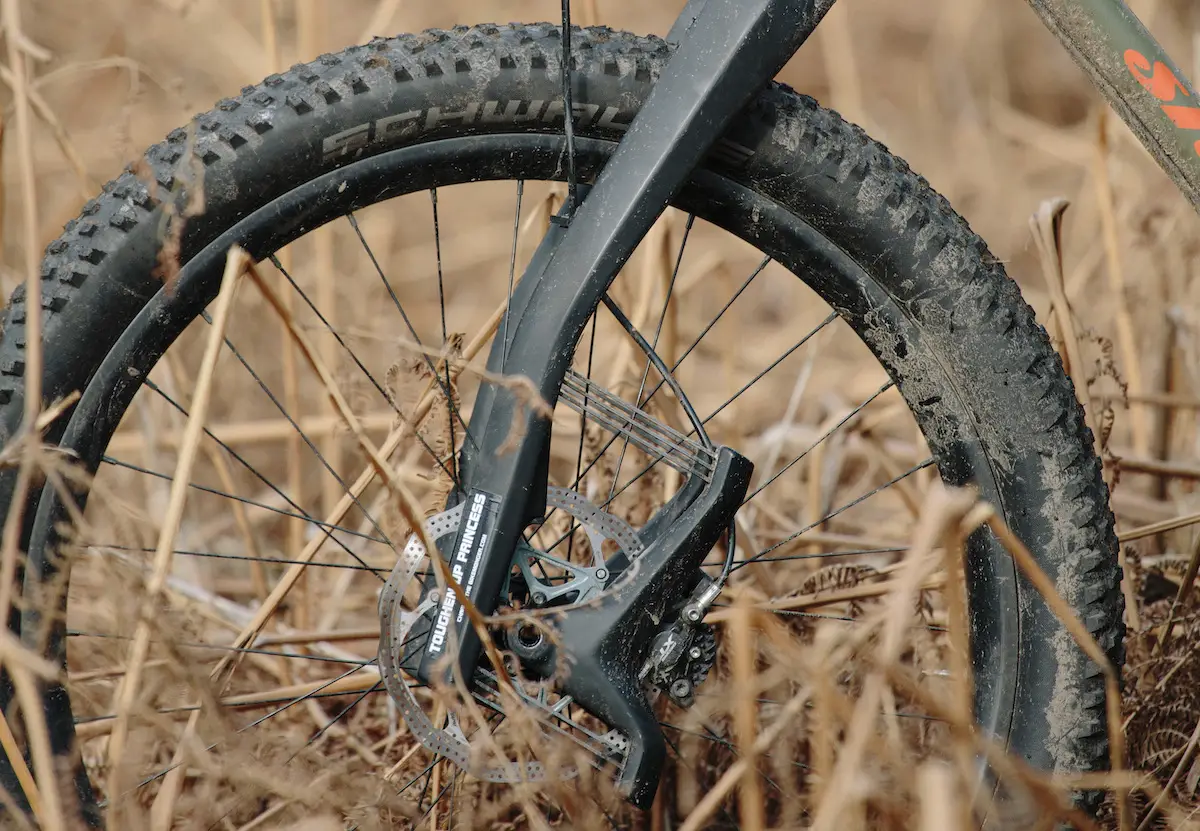




Sounds like my experience with Girvin forks. Works best when you ride it as if you were rigid, otherwise pogo pogo. 🙂
Think this article needs a bit o’ proofreading!
I love mine… Also no chance of damping deteriorating over a 24-hour race as no oil flowing through valves/shims.
transformed my hard tail and I love em. Worth every penny.